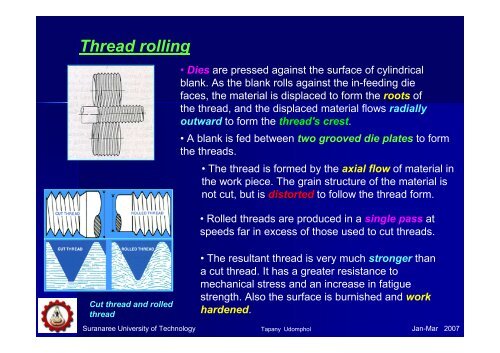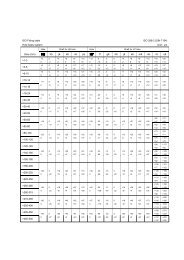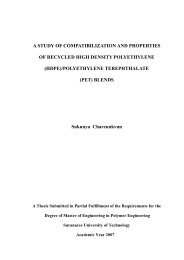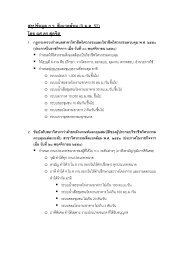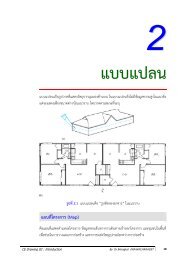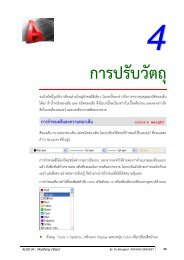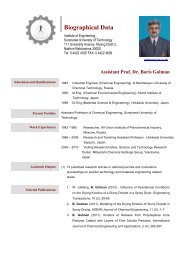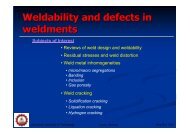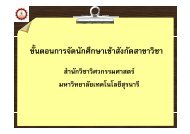Chapter 3 - Rolling of metals
Chapter 3 - Rolling of metals
Chapter 3 - Rolling of metals
Create successful ePaper yourself
Turn your PDF publications into a flip-book with our unique Google optimized e-Paper software.
Thread rolling<br />
Cut thread and rolled<br />
thread<br />
• Dies are pressed against the surface <strong>of</strong> cylindrical<br />
blank. As the blank rolls against the in-feeding die<br />
faces, the material is displaced to form the roots <strong>of</strong><br />
the thread, and the displaced material flows radially<br />
outward to form the thread's crest.<br />
• A blank is fed between two grooved die plates to form<br />
the threads.<br />
• The thread is formed by the axial flow <strong>of</strong> material in<br />
the work piece. The grain structure <strong>of</strong> the material is<br />
not cut, but is distorted to follow the thread form.<br />
• Rolled threads are produced in a single pass at<br />
speeds far in excess <strong>of</strong> those used to cut threads.<br />
• The resultant thread is very much stronger than<br />
a cut thread. It has a greater resistance to<br />
mechanical stress and an increase in fatigue<br />
strength. Also the surface is burnished and work<br />
hardened.<br />
Suranaree University <strong>of</strong> Technology Tapany Udomphol<br />
Jan-Mar 2007


